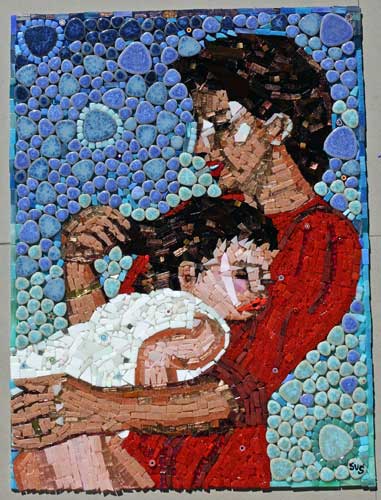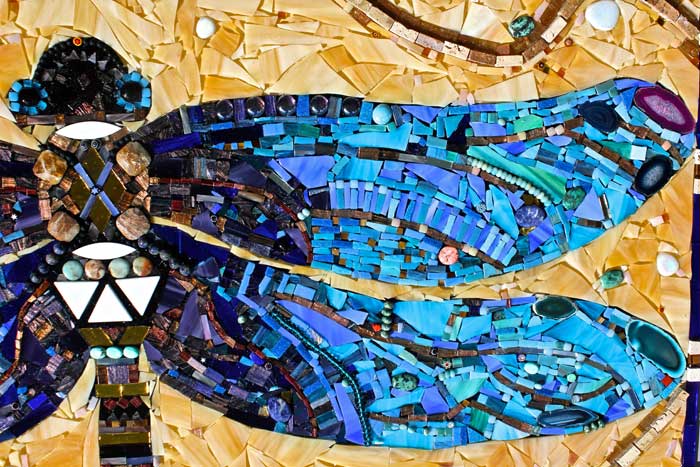While it is possible to make some amazing art using only one type of material, the decision to use multiple materials in the same mosaic tends to stimulate the imagination, often in unexpected ways, in ways that leave the artist wanting to make a series of mosaics to capture just a mere fraction of what might be possible. This is because mosaic is dimensional. The artist might begin by thinking only in terms of the image to be rendered, but merely by handling the materials, the curious mind can’t help but think of what might be.

Troi O’Rourke’s fabulous Struttin’ Peacock is a great example of how tile of different thickness can be used in the same mosaic. Note that the fact that the surface isn’t flush is not a problem. To the contrary, the slight changes in elevation add a whole new dimension (literally) to the mosaic and help to set off the different fields of color.
Playing With Patterns
With mixed materials, there are differences in texture, size and shape (in addition to color), and with found objects such as seashells and artifacts, there is the significance of what those objects actually are in real life. And then there are all the different ways in which the materials could be arranged or grouped to contrast each other. The materials really do present an infinite regress for the artistic mind. I have gone into the studio very focused on a very specific design only to spend the entire session playing with different arrangements and variations. Sometimes I think I could live to be a thousand years old and not be able to complete all the designs I have already thought about. Thus is the nature of mixed-media mosaic art.


Laurie Gilson’s mosaic includes fused-glass seahorses and seaweed, which she created herself, with collected seashells. Note that the water in Laurie’s mosaic isn’t just space to be filled. Instead, she contrasts iridized and matte materials arranged in rows that suggest the flow of the water. Parallel arrangements of of contrasting materials usually make strong patterns.
Groupings of Similar Items

Susanne Sorogon’s dragonfly is more of a departure from naturalistic rendering and makes greater use of mixed-media materials: beads, geode slices, millefiori, decorative tile and stained glass. Again, notice that the wings are not merely space to be filled but are used instead to play with patterns and groupings. The warm honey background and the intense blues of the figure make for a very effective contrast and are further proof of Sorogon’s skill as an artist. Note that this mosaic is ungrouted.